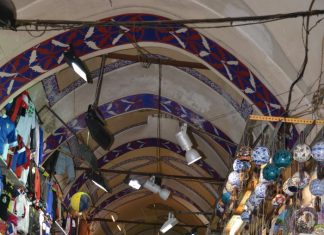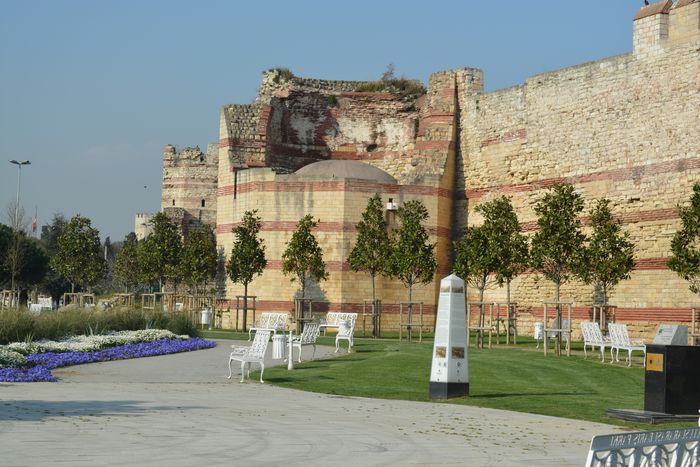Saksagan
Tigranes the Great
Rise to Power
The Decline of the Seleucid Empire
Antiochus VII marked the end of the strong Seleucid rulers, leaving only Syria within the shrinking empire’s grasp. Successors struggled to retain control, facing breakaways like Tyre and Sidon seeking independence before Roman intervention. Damascus evolved into the Arab Ituraean kingdom Mithradates VI of Pontus. A significant influence during this period was Queen Cleopatra Theos, daughter of Egypt’s Ptolemy VI, legitimizing three Seleucid monarchs through marriage.
Constant Struggles for Succession
Following Cleopatra’s death in 121 B.C., succession disputes plagued the Seleucid Empire. Between 96 and 83 B.C., six contenders vied for the crown simultaneously, showcasing the empire’s internal strife.
Missed Opportunities for the Parthians
Despite contributing to the Seleucid downfall, the Parthians, hindered by Saka inv
Mithradates VI of Pontus
Clash with Rome
Roman Supremacy in the Mediterranean
After the Punic Wars, Rome emerged as the dominant power in the Mediterranean. The Roman province of Asia expanded through bequests and campaigns against Cilician pirates. Pergamun, under the last king Attalus III, bequeathed its kingdom to Rome, further solidifying Roman influence. By the end of the century, Roman protectorates included Egypt, Bithynia Rome’s Ascendancy in the East, Cappadocia, Galatia, and Paphlagonia. Mithradates VI of Pontus, however, viewed Rome as an obstacle to his ambitions.
Mithradates VI’s Early Reign
Mithradates VI inherited the Pontic throne at twelve in 120 B.C. Despite his young age, he proved a skilled organizer and expanded his kingdom by annexing Colchis (Georgia) and the Crimea in the last decade of the second century. Forming alliances with Parthia and Armenia, he married his daughter to Armenia’s Ki
Ancient States of Asia Minor
Pontus, Cappadocia, and Pergamun
Pontus A Multilingual Region
The northern coast of Asia Minor, known as Pontus, was dominated by a feudal Persian nobility. Despite its fertility, the region was home to people speaking twenty-two different languages in its villages. King Mithradates I (301-266), a partially Hellenized Persian claiming Achaemenid descent, founded the state, gaining independence from both Antigonus I and the Seleucids. Welcoming the arrival of the Gauls like the Bithynians Turmoil and Decline in the Seleucid Kingdom, he established the capital in Amasia, later moved to Sinope in the second century.
Rise of Pontic Power
Mithradates’ successors strengthened the country, employing many Greeks and earning recognition as a Hellenistic power. Pharnaces I (185-169), one of them, ambitiously proposed a Pontic empire encircling the Black Sea. Mithradates V (150-120), the son of
Turmoil and Decline in the Seleucid Kingdom
Unhappy Marriages and Poisoned Kings
The marriage between Antiochus II and Berenice turned out to be far from happy. After a brief period, Antiochus abandoned Berenice and their infant son to reunite with Laodice. Unfortunately, Laodice poisoned him, declared her own son Seleucus II (246-225) as king, and ordered the execution of Berenice and her son. This treacherous act triggered the Third Syrian or Laodicean War (246-241) when the Egyptian king, Ptolemy III Challenges and Decline in the Seleucid Kingdom, sought vengeance. Despite Ptolemy’s initial successes, particularly in recapturing Ionia, coastal Syria, and part of Thrace, Seleucus struggled in a civil war with his brother Antiochus Hierax, preventing him from reclaiming lost territories like Pergamun, Parthia, and Bactria.
Successors and Continued Losses
Following Seleucus III’s reign (225-223), Antiochus III, an eighteen-year
Challenges and Decline in the Seleucid Kingdom
During its zenith around 300 B.C., the Seleucid Kingdom, led by Seleucus Nicator, spanned approximately 1.5 million square miles. Despite being considered Alexander’s true heir due to significant territorial acquisitions, Seleucus faced numerous challenges that impeded the kingdom’s stability and unity.
Ethnic Disunity and Territorial Losses
The primary obstacle was ethnic disunity, resulting in Greek factionalism, varied governance across provinces, and anti-Greek sentiments among the native populations. Foreign adversaries surrounded the kingdom, contributing to its sluggish responsiveness Ancient States of Asia Minor. Seleucus had to relinquish the Indus Valley, and during his reign, Armenia, northern Anatolia, and northwestern Iran gained independence.
Challenges Under Antiochus I
Under the rule of the second Seleucid king, Antiochus I (281-261), the situation worsened. Gauls invaded from th
Alexander’s Conquests From Diplomacy to Gaugamela
As Alexander confronted the resilient city of Tyre, Darius extended a remarkable peace offer through an envoy. Darius proposed peace, the safe return of his family, ten thousand gold talents (equivalent to about $3 billion today), all the Macedonian-conquered land, and the hand of his daughter in marriage. Parmenion, the top-ranking general, advised acceptance, but Alexander, fueled by growing ambitions, declined. His vision now reached beyond conquests; he aspired to establish a universal state marked by racial harmony and equality, with himself at the helm Alexander’s Conquests From the Gordian Knot to Tyre’s Fall.
Before departing Tyre, a Samaritan delegation sought Alexander’s favor, leading to the construction of a rival temple on Mt. Gerizim, challenging the Jewish temple in Jerusalem. The siege of Gaza followed, and then Alexander turned east, reaching Jerusalem. The Jews, impre
Alexander’s Conquests From the Gordian Knot to Tyre’s Fall
Following his triumph in Ionia, Alexander embarked on a remarkable journey through Caria, where a local queen embraced him as an honorary son. The expedition led him to Gordium, where the Phrygians presented him with the famous Gordian knot, a puzzle that he swiftly solved by slicing it with his sword, signaling another favorable omen.
In the fall of 333 B.C., Alexander faced a significant challenge at the Cilician Gates in the Taurus Mountains. Darius, fully aware of the threat from the west, awaited him with a formidable army. Despite being outnumbered, Alexander employed tactical brilliance to secure victory in the Battle of Issus. The Persian forces, confined between mountains and the sea Alexander the Great Conquest and Challenges, were unable to leverage their superior numbers. Alexander strategically positioned himself on the right flank, creating an opening to penetrate the weakened enemy line. His maneuverin
Alexander the Great Conquest and Challenges
Alexander the Great’s conquests were marked by strategic brilliance and audacity. After his father Philip of Macedon secured Greece, the stage was set for the ambitious plan to conquer the mighty Persian Empire.
Philip’s meticulous preparations for the invasion were cut short by his assassination, possibly at the hands of the Persians or his wife Olympias. Undeterred, Alexander, his twenty-year-old son, took up the mantle in 334 B.C. Armed with a formidable army, he set out to fulfill his father’s dream Alexander’s Conquests From Diplomacy to Gaugamela.
Confidence in Conquest
Philip had reasons for confidence. The Macedonian army was considered the best in Europe, and the Persians had traditionally relied on Greek mercenaries. Inspired by historical successes, such as those of Xenophon and Agesilaus, Philip believed in the feasibility of his conquest.
Alexander, int













